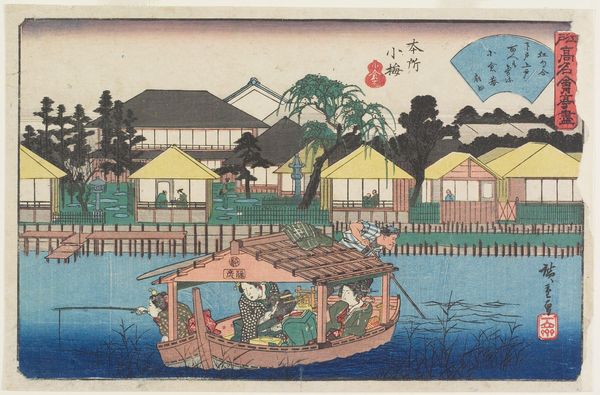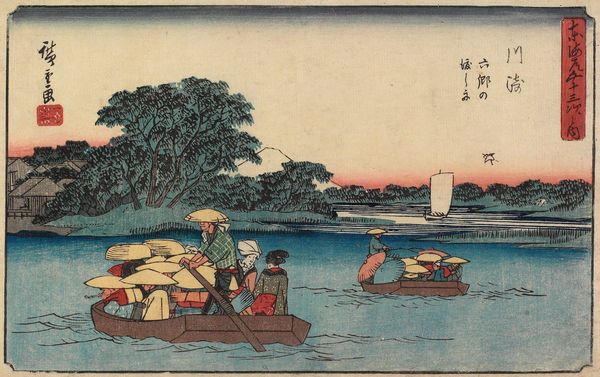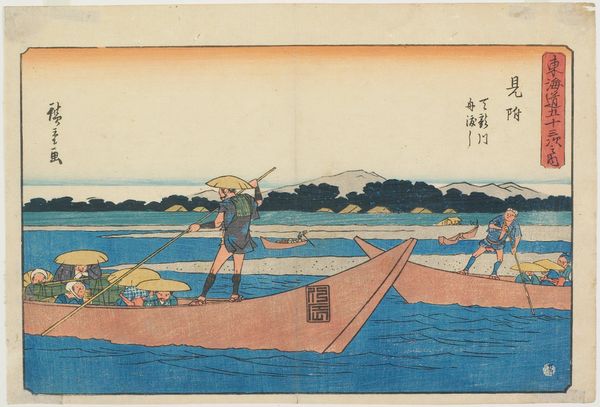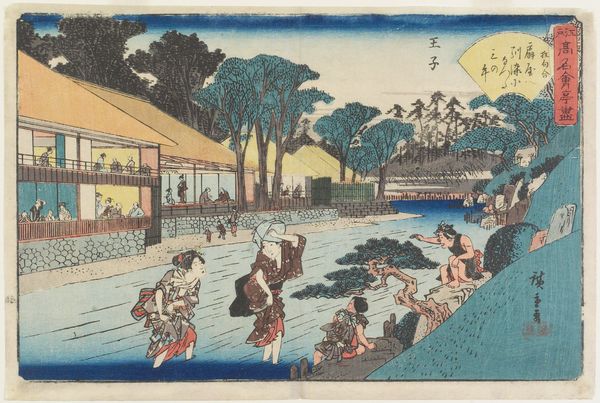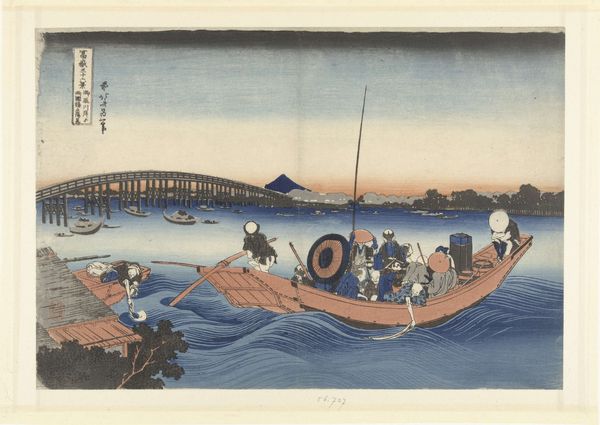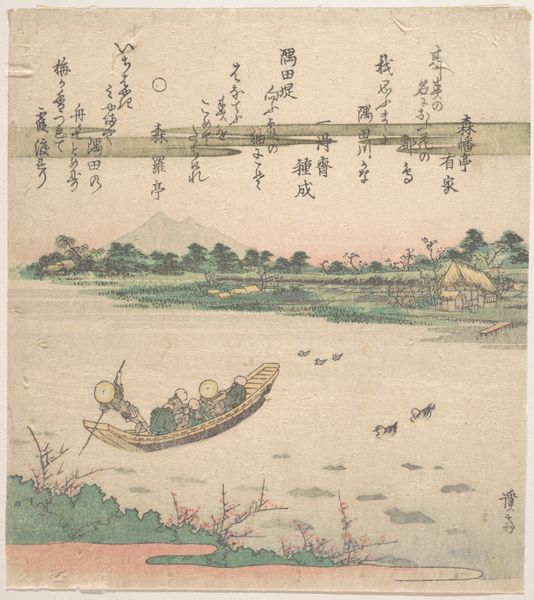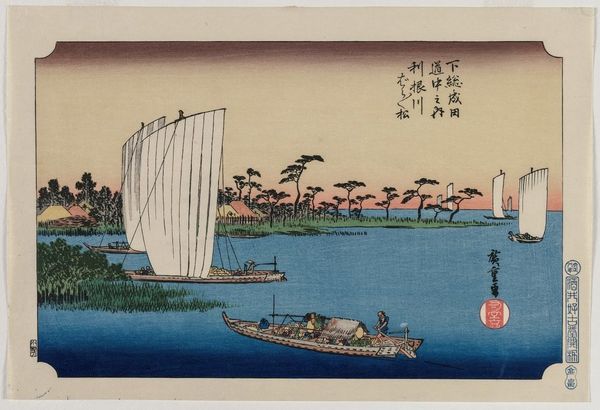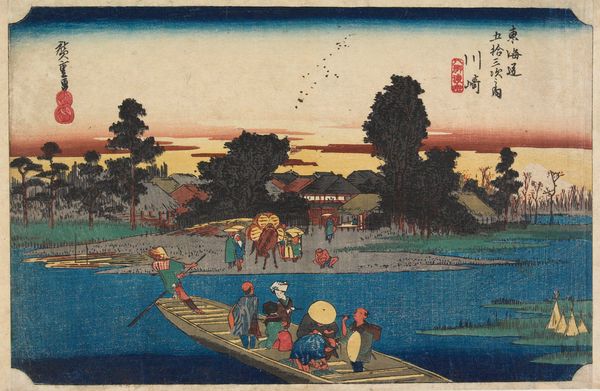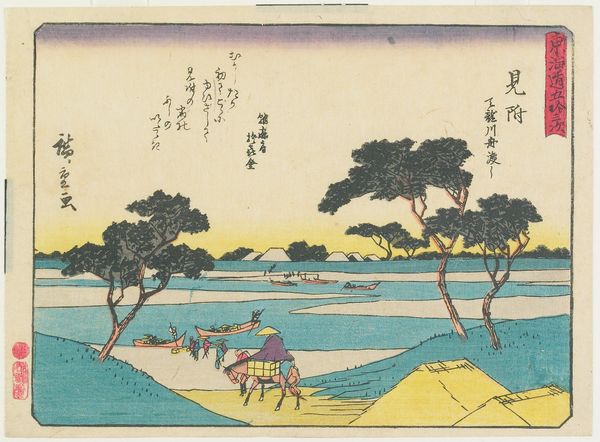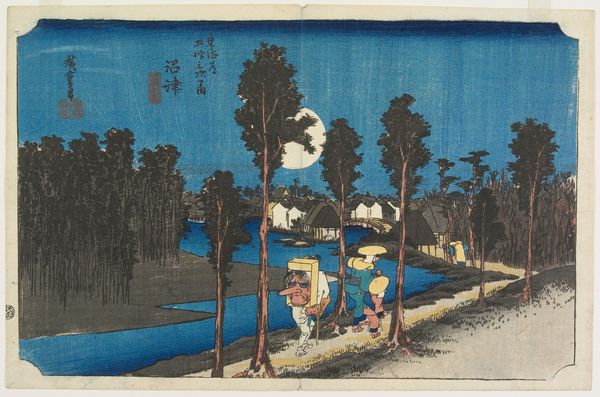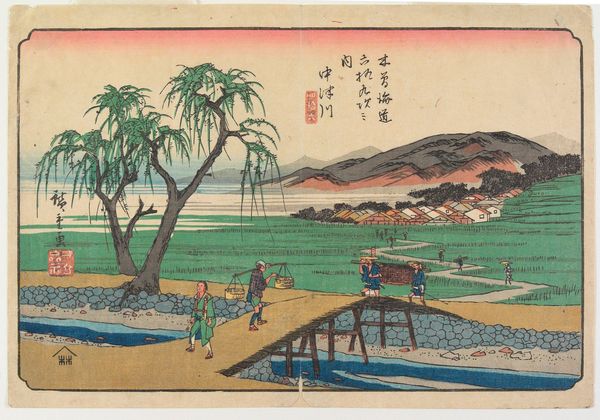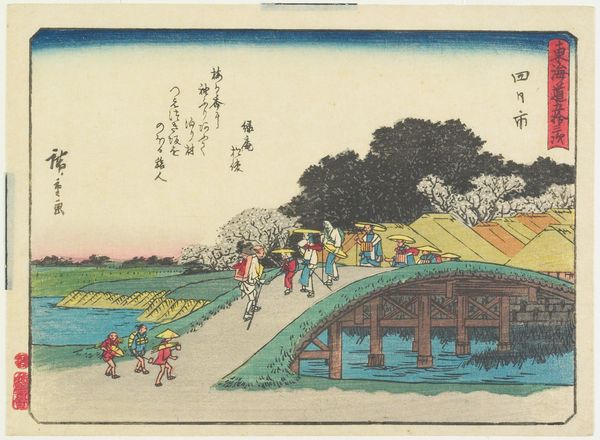
Dimensions: 7 7/8 x 12 11/16 in. (20 x 32.2 cm) (image)
Copyright: Public Domain
Curator: Let's turn our attention to this striking image, "Ferry at Rokugō" by Utagawa Hiroshige, created between 1841 and 1842. It's a woodblock print, currently held at the Minneapolis Institute of Art. Editor: It has such a sense of calm to it. The cool blues and greens, the gentle curve of the river... It evokes a feeling of quiet transit and connection to the land. Curator: Absolutely. The scene is a snapshot of everyday life. Notice the figures crowded into small boats, likely traveling along the river. These kinds of images played a crucial role in Ukiyo-e, which often showcased landscapes, travel, and the fleeting moments of pleasure in urban life. The passengers could be anyone--merchants, laborers, even pilgrims, crossing a key river way. Editor: It’s interesting to consider that these kinds of river crossings were, for many, daily rituals, connecting communities across geographical divides, a vital artery of commerce and social life. These hats are giving an interesting uniformity in contrast to the probable diverse individual backgrounds in the ferry. They almost merge in a collective, creating a new form of class or identity together as 'the ones crossing' this segment. Curator: Yes, their large sun hats suggest they might be of different occupations all exposed to sun, such as farmers or fishermen. Their shape provides unity. We can think about these ferries not only as means of physical transportation but as liminal spaces – borderlands between places and states of being. Each crossing holds a whole host of individual experiences, a microcosm of society moving together in this specific space. The mountain silhouette offers a very permanent, secure balance with these more temporary or transitioning spaces. Editor: It is fascinating to read the symbolism of nature against that of social dynamic. So this ordinary act becomes more resonant. Seeing the composition laid out in distinct planes from the foreground boat, middle ground shoreline to the horizon--helps me appreciate the structure behind such calm simplicity. These woodblock prints were actually popular souvenirs from famous landscape sights during that time. I'm realizing, the artist created not only this landscape's version but he made it function as the space or access between this side of the river with all the possible destinations it led to! Curator: Indeed! Hiroshige encapsulates a time, place and all the hopes tied to the act of crossing to the unknown. His legacy certainly resonates. Editor: Yes, and thinking about how this ordinary scene becomes infused with the energy of transition...It has given me new ways to consider this piece beyond a simple scenic view.
Comments
No comments
Be the first to comment and join the conversation on the ultimate creative platform.
